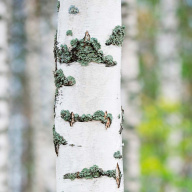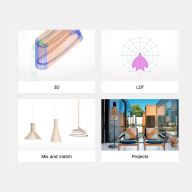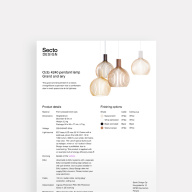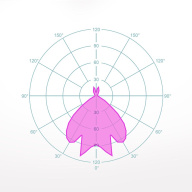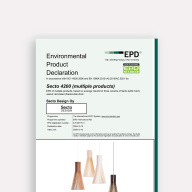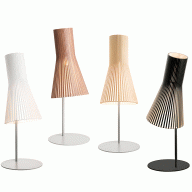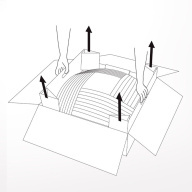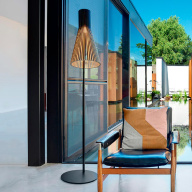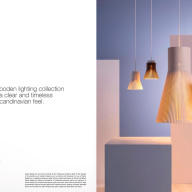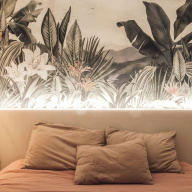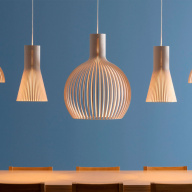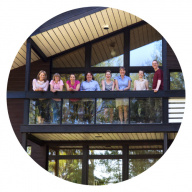
Birch
Birch is the national tree of Finland and a perfect material for the Secto Design lamps thanks to its strong and resilient fibers.

A Finnish birch forest on a sunny winter afternoon.
Precious birch
Birch is the most common deciduous tree in Finland. After the last glacial period in the northern hemisphere some 10 000 years ago, birch trees were the first to dominate the landscape thanks to their remarkable tolerance to challenging conditions. Today, white birch trunks are a typical sight from the south coast of Finland up to Lapland, only the size of the birches gets smaller the further north one travels.
In Finland birches are everywhere, in gardens and in forests, living side by side with all Nordic flora and fauna: Their branches provide shelter for many birds, theirs leaves are eaten by forest animals like elks, hares, grouses, mice and insects and the roots are a fertile substrate for many delicious mushrooms.
Birch trees grow relatively fast in the moist Finnish soil. Snow and rain irrigate their thirsty roots in the fall and winter and the Finnish sun gives it a perfect amount of light for the photosynthesis during spring and summer. In 40 years, a sapling becomes large enough to be logged, and after logging, new saplings are always planted to guarantee the growth of a new forest.

Freshly sawed birch has a fair light color.
Birch has always been a precious tree to the Nordic peoples. In ancient times, birch was regarded as the guardian of the people. It served not only to make cottages, firewood, naturally antibacterial utensils, tools and accessories but it was also used for remedies and nutrition. Birch sap and leaves are still used in refreshing summer drinks and xylitol, the sugar from the birch, is widely used among Finns in dental care products, for example, in chewing gum.
Being a deciduous tree, the birch sheds its leaves before winter in order to save energy. In spring, Finns wait for the first tiny leaves to appear on birch branches. Seeing green on birches makes Finns happy after the dark and cold winter. After the leaves burst, they grow fast. On Midsummer’s Eve Finns show respect to the birch as a symbol of summer by decorating festive venues with young birches. During summer, the leaves grow bigger and darker. In October they turn yellow and finally fall in the stormy autumn weather. In January birches get another kind of mantle when the white glittering frost on the branches gives them a magical look.

The first tiny leaves appear in the end of April.
Sustainable green gold
Finland is the most forested country in Europe. About 80% of the country is covered in green gold and therefore it is only natural that the forest industry has become a significant field of business in Finland. Already in the Middle Ages Finland was an important exporter of logs and tar used for shipbuilding in Europe. Today, Finnish wood is used for paper, pulp, veneer, construction and carpentry. Wood is also turned into a rayon-like textile fiber used in ecological fashion. And, as the interest for super foods grows worldwide, the production of the Finnish xylitol is growing.
Birch used for the Secto Design lamps grows in PEFC certified commercial forests in Finland. The PEFC certification guarantees ecologically and socially sustainable forestry. This means that aspects like biodiversity, forest health, the wellbeing of the workers and the cultural value of the forests are taken into account.

Birch forests are are very green in the summertime.
Economic responsibility ensures that forestry is equitably profitable for all. The PEFC certification also makes the supply chain transparent. Certified birch wood can be traced back to the forest where it was logged.
Most Finnish forests are privately owned making forestry a well-known activity for many Finns. It is not only forest owners who roam the forests: thanks to ”everyman’s freedom” codified in the law, the forests are accessible to everyone for hiking, camping and berry picking regardless of who the owner is. What a treat for the Finns who love outdoor activities!
Finns are experts not only in forestry, but also in carpentry. Despite being an everyday material, wood is highly respected and every Finnish child studies wood crafting in school. Many colleges in Finland also offer high-level vocational carpentry education.

Birch leaves turn yellow and drop in October. Photo by Rauno Korhonen.
Strong yet pliable
Birch is regarded as a Nordic hardwood. Freshly sawed birch has a fair light color which turns slightly yellow when the wood material ages in daylight. The grain is fine, making the surface even and sleek. Birch as a material is strong yet resilient. This makes it a perfect and durable material for form pressed shapes like the ones in the Secto Design lamps.

Snow on the branches.
Loading form




